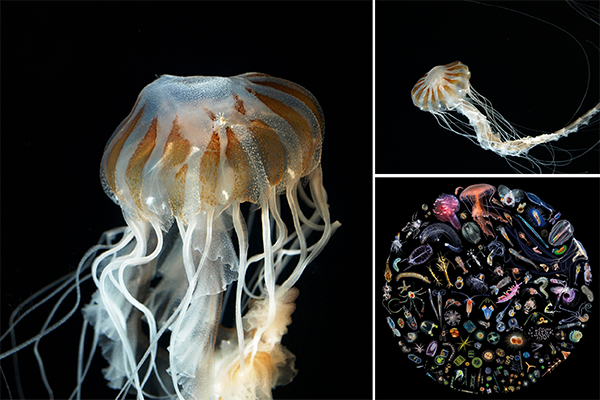A University of Louisiana at Lafayette biologist is among researchers asking if the Deepwater Horizon oil spill affected what’s on the menu in the northern Gulf of Mexico.
Dr. Kelly Robinson and oceanographers from the University of Southern Mississippi and Oregon State University will share a $900,819 grant from the Gulf of Mexico Research Initiative, or GoMRI.
Robinson and her colleagues want to uncover whether the 2010 oil spill diminished plankton and fish populations in the open waters of the Gulf. If so, that could affect its food web and oceanic fisheries, since larval fish eat plankton.
Plankton are microscopic aquatic organisms that are often too weak to swim against the ocean currents, so they generally go with the flow. Their easygoing ways shouldn’t obscure the vital part they play in the ocean’s food chain, however. An environmental threat such as an oil spill could carry implications beyond the sea.
Plankton include viruses and algae; ethereally winged pelagic snails and pulsating jellyfish; and the early life stages of marine animals often featured on plates in South Louisiana – shrimp, crab, oysters and fish.
Without plankton to eat, fish populations might decline. Then mammals higher on the food chain, like dolphins and humans, won’t have fish and other seafood for dinner, either.
Robinson’s share of the grant is $264,000. She’ll use a portion of the money to support a doctoral student in her lab. Robinson will also train undergraduate researchers to identify images of plankton collected during earlier GoMRI-funded expeditions.
The researchers will use plankton-imaging technology and classification software to accelerate identifying and counting the plankton to determine if the oil spill reduced the organism’s numbers.
“Instead of someone sitting down and handpicking through a sample to identify and count the number of organisms that are there, which is time-consuming and labor-intensive, you can take a picture of animals by scanning the sample, like you would a piece of paper, with an imaging machine. The machine will then take the picture, and count and identify the different types of animals by using a computer algorithm,” Robinson said.
“They are generating a lot of samples very quickly, so the automation is good.”
GoMRI announced 31 grants last month totaling about $50 million to support research on the effects of the Deepwater Horizon explosion and spill on the Gulf’s ecosystem.
It’s the final large grant GoMRI will administer before the program ends in 2020.
GoMRI is a 10-year, $500 million research program established by BP after the Deepwater Horizon oil spill. A wellhead on the rig exploded April 20, 2010. Eleven crew members died. Millions of barrels of crude oil spewed into the Gulf before the well was capped 87 days later.
Robinson’s grant isn’t UL Lafayette’s first association with GoMRI. A consortium led by two University researchers secured GoMRI grants during a previous round of funding.
Dr. Natalia Sidorovskaia, chair of the Department of Physics, and Dr. Azmy Ackleh, dean of the Ray P. Authement College of Sciences, are the director and deputy director, respectively, of the Littoral Acoustic Demonstration-Gulf Ecological Monitoring and Modeling consortium, or LADC-GEMM.
The group includes researchers from UL Lafayette, the University of New Orleans, the University of Southern Mississippi and Oregon State University.
The consortium received a $5.2 million GoMRI grant in 2014 to examine how the oil spill affected deep-diving marine mammals in the northern Gulf.
The ongoing study collects data using passive acoustic monitoring devices – called Environmental Acoustic Recording Systems, or EARS – attached to the sea floor to record vocal interactions among whales and dolphins.
The sounds enable the researchers to estimate current and future mammal populations.
Automatic detection algorithms and models sort the acoustical data, which averages about 40 terabytes, or 200,000 samples of continuous recordings per second, Sidorovskaia said.
Researchers will retrieve the most-recent data from the Gulf later this month.
“The LADC-GEMM research team will continue to be involved with GoMRI during the next two years to advance their study, to synthesize data with our research group, and to disseminate findings to a broader community of stakeholders,” Sidorovskaia said.
Caption: Jellyfish, such as those featured at left and at upper right, are one type of plankton. Plankton come in many shapes, sizes and types, as illustrated in the bottom right photo. (Credit: Jellyfish images courtesy of Kelly Robinson and M.E. Miller. The “Art of Plankton” image courtesy of Christian Sardet).
